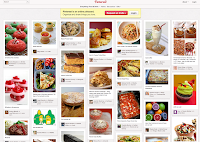By Account Executive, Rebecca Edwards
No, I can’t read her mind.
No, I can’t finish her sentences.
No, I can’t tell you what she is doing at this very second.
But am I thankful for being a twin? Yes.
Asking good questions is important in life. In the public relations industry asking good questions to your client is the only way to fully understand their needs and wants. Questions are the key to communicating with anyone. If there is one thing I have learned from being a twin and a public relations major – always ask good questions!
Here are the top five most annoying questions to be asked when you are a twin:
1. Why can’t you be more like your twin?
Why would I want to be? I have had to compete my entire life with another person so obviously I want to stand out.
2. Which one is the evil twin?
You really think one would admit if they were the “evil” one? Evil is such a harsh word that is too broad to use here. Everyone has his or her rough patches in life, being difficult growing up doesn’t make you the “evil” one.
3. What’s it like to be a twin?
What’s it like being related to your best friend? Growing up under the same rooftop, talking everyday, that’s what it’s like. When people ask me this question I either say, “It’s cool” or “Do you have 4 hours to really hear what its like?” I think people expect to hear a few sentences describing everything, but that is not the case. Being a twin is something only twins understand. Jealous?
4. What is your twin thinking?
Can you tell me what I am thinking? Nope, didn’t think so. Just because we share the same birthday and happen to have similarities doesn’t mean we share a brain. It would be remarkable if I knew what she was thinking all the time, but it doesn’t work like that.
5. When is your sister’s birthday?
You’d be surprised; this question comes from people who know I only have one sister, my twin. When people ask me this question I look into their eyes and wait for them to figure it out.
There is more to being a twin than answering annoying questions. It has taught me the importance of asking intelligent questions in the public relations industry.

























